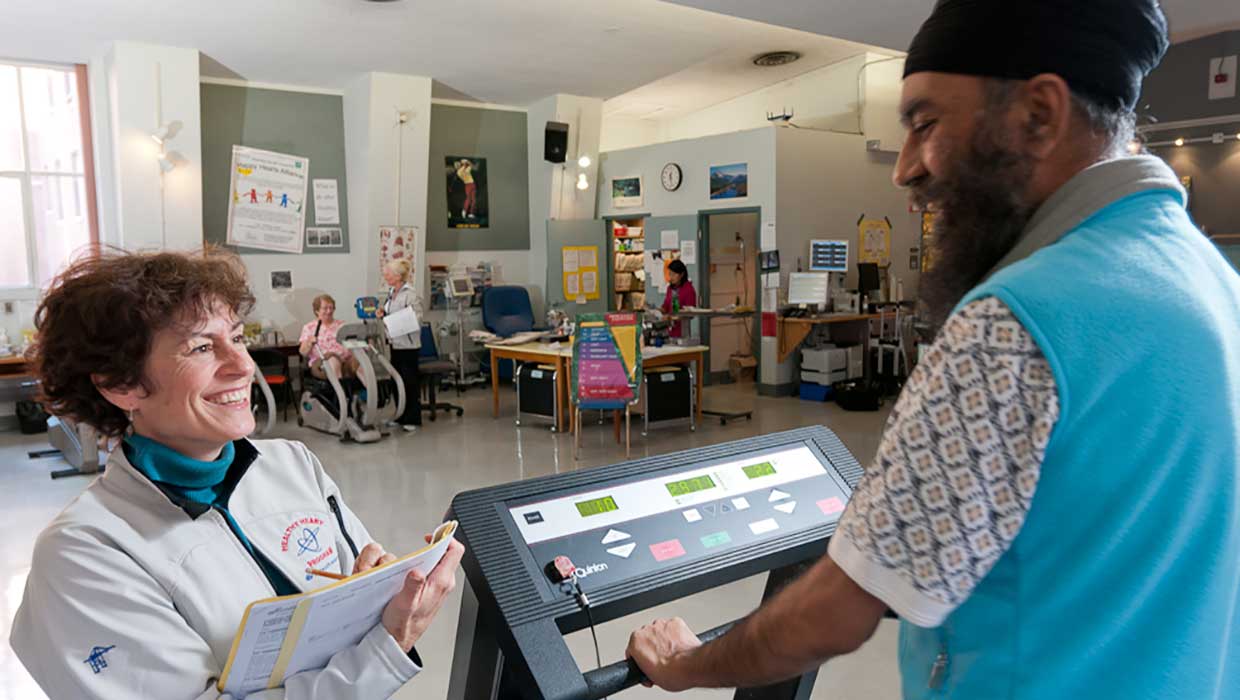
RESEARCH INFRASTRUCTURE
Current State:
VGH: Centralized research program with manager. Pros are combined resources, efficiencies of central office (can justify full-time employees), centralization of research funds (bigger pool to cover expenses, offset profitable studies with unprofitable). Disadvantages: less flexible to take
on certain projects, needs of smaller groups must be balanced with needs of the whole, successful groups would be supporting less successful groups.
SPH: The centralized research program broke down years ago. Now research programs are separated into clinical programs. The 4 dominant programs are: 1) interventional research, 2) Cardiac Rehab/Lipids/Metabolic/Prevention 3) Imaging and 4) Heart Rhythm. CCU and heart failure have little of their own research. Advantages of this structure are flexible programs that
are designed to meet the needs of that specific area. Less developed programs suffer from lack of resources. Hard for small programs to build the resources sufficient to develop a self-sustaining and successful program.
Other resources, such as CHEOS, ICVHealth, HLI and C2E2 can provided invaluable support and resources but do not, as yet, have a formal connection with the Division of Cardiology.
Investigator-Initiated Research – Infrastructure Gap:
The existing Divisional research infrastructure has largely been generated by and for industry studies and less by agency-funded investigator-initiated grants. Each of these funding sources is important but require different skills and infrastructure. The most successful research programs in the Division have traditionally come from areas where industry funding/partnership was present. Recent recruits with an academic focus are more often in
areas without a dominant industry presence and will have to rely more heavily on public agency funding.
Potential Initial Investments in Research Infrastructure from CAPP:
1. Certain skills and expertise, from a trained research associate, would be invaluable to junior and mid-career investigators (presuming senior investigators have this help already in place). This might take the form of 1-2 dedicated research associates who meet regularly with defined junior/mid-career investigators, regardless of their area of research (more
realistic in the Division’s current state). Alternatively these resources might be provided via research associates tied to a certain area of focus (see ideal state). These skills/services include:
- Ethics application (based on a well written proposal from the investigator)
- Design of consent forms/promotion materials and handouts
- Dealing with renewals
- Grant application assistance
- Ensuring adherence to deadlines
- Formatting of grants
- Assistance with uploading/online submissions
- Signature collection
- Proofing for style/grammar
- NOT DEVELOPING CONTENT
- Financial assistance
- Navigating setting up UBC/VCHRI/PHCRI accounts
- Contracts with other sites (for unfunded or investigator-initiated projects)
- Data sharing agreements
- Assistance in accessing resources for project development (liaison)
- Database infrastructure
- Design and methodology consultation
- Statistical analysis
- CV Support
- Assistance with Canadian Common CV updates
- Assistance with UBC CV updates
2. Many investigators in the Division are participating in observational research and registry creation. Registry development can be initially costly. However, there is enormous potential to harness the large amount of data from the clinical volumes at UBC. The research committee could explore the funding of basic common database/registry architecture (potentially including an EMR/database interface) that could be used throughout the Divisions various programs and allow collaboration/exchange between databases. This basic infrastructure could reduce the costs of starting/maintaining focused
databases.
Near Future Ideal State for Divisional Research Infrastructure:
In my view the ideal state of Divisional infrastructure would take advantage of leveraging efficiencies of scale while maintaining the expertise and flexibility of subject-focused groups.
This might take the form of a program with:
- A senior research manager for the Division with an overarching leadership role for all research activities
- Works closely with the Divisional Research Director (UBC employed)
- Site agnostic
- Responsible for strategic development and ensuring sustainability
- Responsible for allocation of common resources to areas of greatest
need/benefit - Responsible for promoting collaboration across clusters (see below)
- Promotes linkages with UBC/Provincial research resources such as ICVHealth, CHEOS, C2E2.
- Research clusters aligned along content/expertise lines
- Clusters are site-independent to encourage collaboration and lack of duplication between sites
- Each cluster has a dedicated research manager (UBC employed) and an
administrative assistant - Additional research resources for that cluster are dependent on the specific needs and resources of that cluster (human resources, space, equipment)
- Clusters would be allowed independence in deciding their focus, research study participation and resource allocation
- Clusters would report to the Divisional senior manager and would have
reasonable targets for financial self-sufficiency and productivity - Smaller research areas might be combined into a larger cluster to ensure
adequate research infrastructure - Investigators would have a primary cluster association
- Divisional Research Infrastructure Funding
- Through CAPP (or its future iteration), the Division would ensure a basic level of funding, which would include:
- Senior research manager salary and benefits
- Some portion of cluster research manager salary and benefits
- Backstopping/short-term funding for emerging clusters
- Ensuring research space and common resources (physical and IT)
- Through CAPP (or its future iteration), the Division would ensure a basic level of funding, which would include: